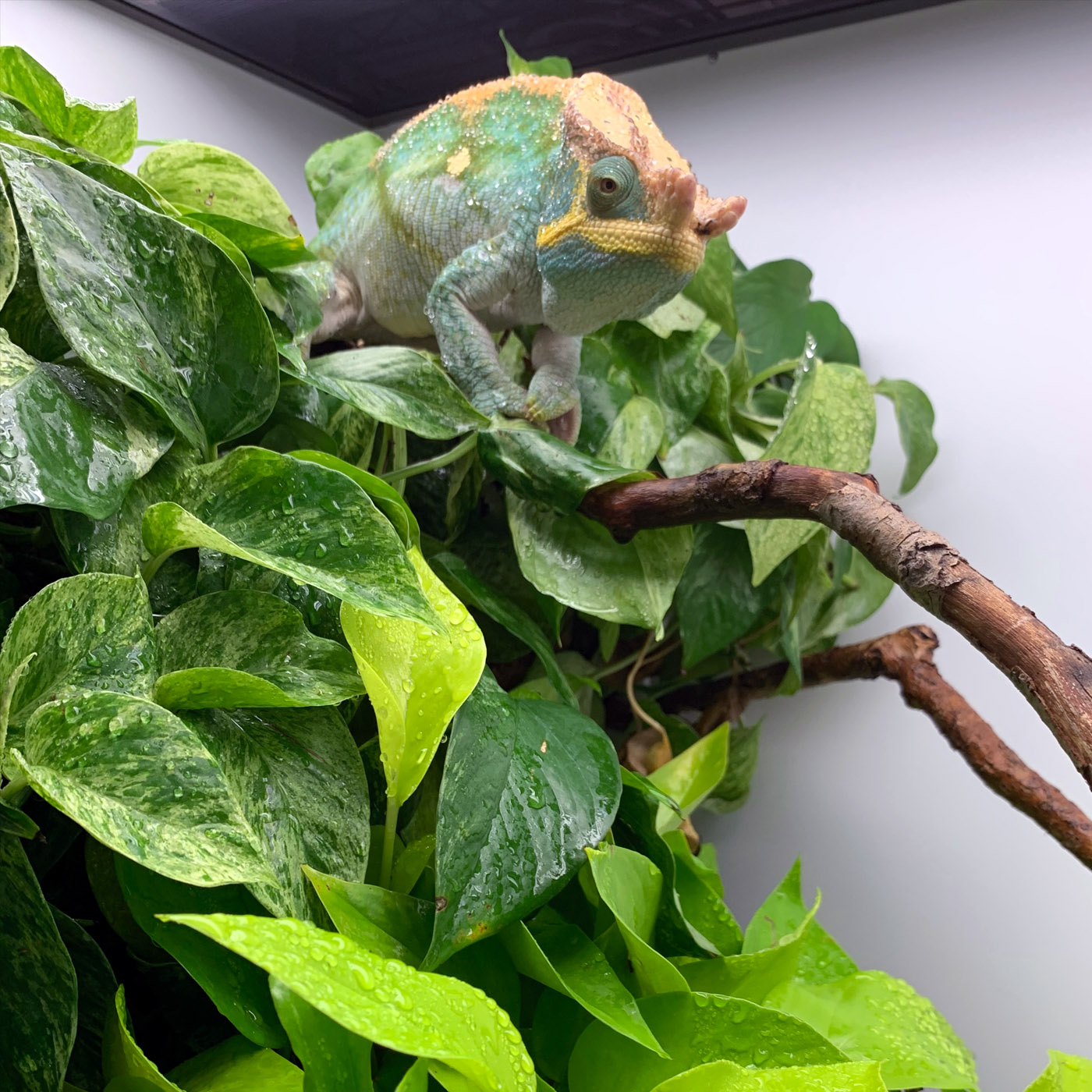Chameleon Cage Type: Screen, Hybrid, and Glass
Warning: Trying to access array offset on value of type bool in /var/www/wp-content/themes/porto/vc_templates/vc_single_image.php on line 205
Which type of cage you use for your chameleon – Screen, Hybrid, or Glass – can be a controversial topic. A significant segment of the community holds to the thought that chameleons need screen cages or they will die. This is simply not true. In fact, in most cases, a hybrid cage is more appropriate. A hybrid cage has mostly solid sides with special vents or screen panel configuration to encourage airflow. The truth is that the closer your ambient conditions are to what your chameleon needs, the more screen sides you’ll want on the cage. The more you have to change the ambient environment, the more solid sides you’ll have to incorporate.
Most care information available is for screen cages. Although there has been a significant adoption of solid side cages in the advanced community it isn’t because using them is so hard. It is simply that the experienced community knows what the best tools for the job are and are not swayed by the hype. I have often said to go with the cage type your advisor is most comfortable with. But when you have your feet under you and are able to understand your cage system then look into hybrid caging. In most cases, you will find your ability to create the proper humidity ebb and flow much easier!
The key to making solid side cages work is that you learn to monitor your heat and humidity. While screen cages are easier in the respect that they don’t store heat and humidity, they are less effective because you are unable to control the ambient conditions of the chameleon’s cage beyond the localized areas in front of the basking bulb or fogger.
The glass vs. screen debate will continue for long time. Perhaps the compromise of the hybrid cage will serve as a bridge for future chameleon community generations to see the cage types not as competitors, but as tools to be used where their advantages contribute to better chameleon husbandry.
Conclusion
I do not specify a cage type on the Chameleon Academy Care Summaries because the cage type will depend on your environment. A person in hot, dry Arizona with the air-conditioning running all day may not use the same caging as someone in humid, cool England. There is a false comfort in choosing to listen to an “expert” source that gives you a simple answer without taking into account the details of your particular situation. Unfortunately, doing it right is not simple. You have to think about conditions. While the ability to do this should be every chameleon keeper’s goal, there is no doubt that this is a skill to be learned that is beyond most people just starting off. We all start at the beginning and there is no shame in that. So the best course of action is to find a mentor or advisor that has kept chameleons in your general area and has dealt with the conditions you will face. And do what they have been successful with. Although I would cringe at advice given by people who say to only use screen cages, I also acknowledge that screen cage husbandry has been made to work. If you are surrounded by people saying to use screen cages only then you will probably be okay doing what they do. If their chameleons are alive they have figured out how to make it work. Just keep in the back of your mind that there is far to go and much to learn on the subject of chameleon cage types. But that can be for another day!
Further Research
There are, of course, many resources for continued research on the subject. A good start are two podcasts on both glass and hybrid caging.
Bill Strand
Keeping Chameleons in Glass Cages with Dr. Chris Anderson


Bill Strand
Ep 169: Keeping Chameleons in Hybrid Cages
Back to the Chameleon Question Hub!
Click here to go back to the Chameleon Question Hub to review more questions!













